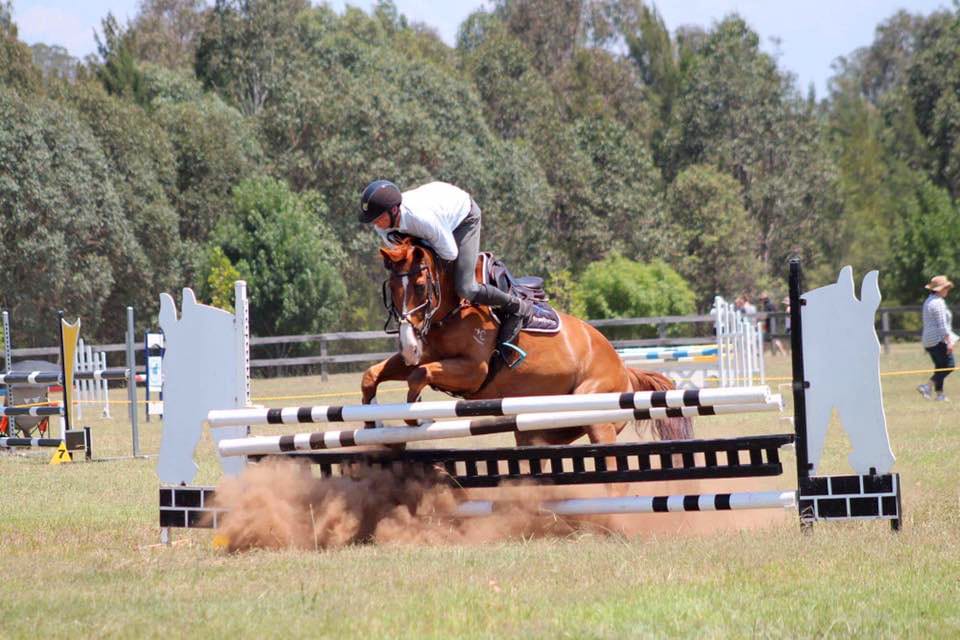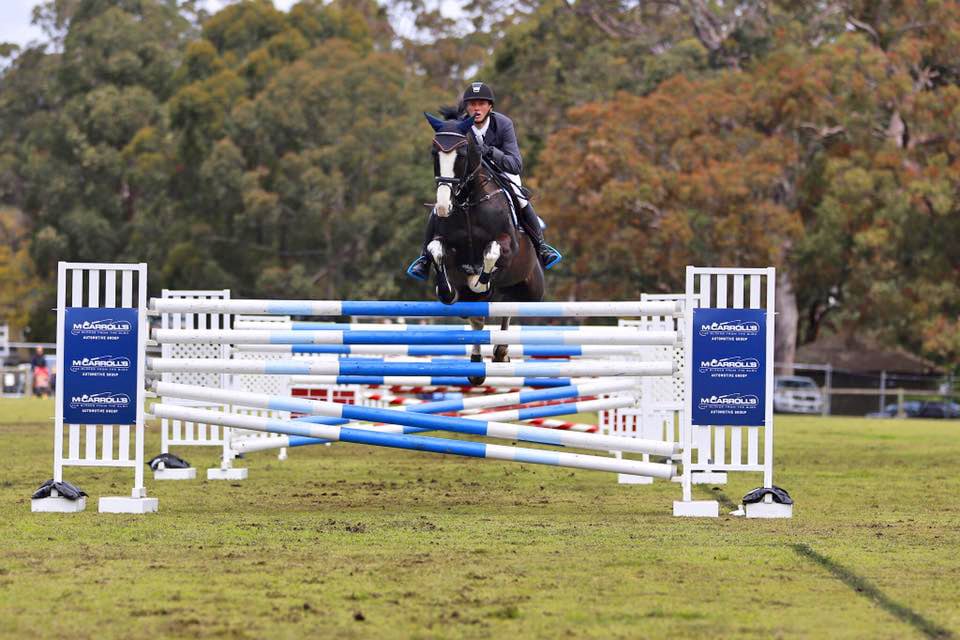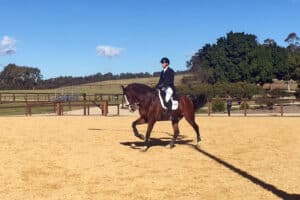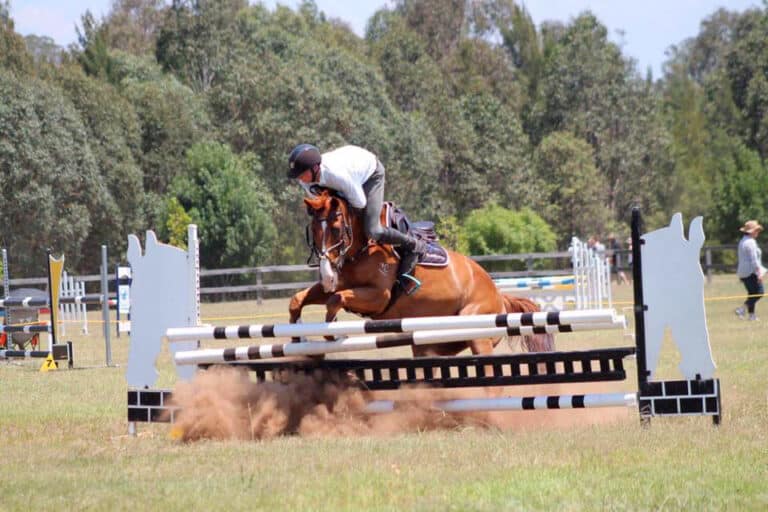
When should you give up?
Is there a point during training when you’d be better off admitting temporary defeat and changing your approach? CHARLIE BRISTER believes there is.
You’ve set a training task for you and your trusty steed. You hop out of bed that morning, get in a quick coffee or two, and out the door you go, bursting with enthusiasm.
But, on this occasion, your horse just isn’t feeling it. Slowly it dawns on you that despite your best efforts, you are not going to achieve a flying change on this occasion. And that 80cm fence you’ve been working up to so successfully? Nope, not today.
What should you do? Do you just give it up and call it a day?
If things aren’t working, giving up may mean giving up on that goal for the time being, and setting a less difficult task for your horse for that particular training session.

So, the short answer is yes, sometimes it is best to give up rather than keep pushing ahead. When you and your horse are struggling with a certain task, when it’s all proving to be really difficult, or if your horse is getting confused, then it’s better to stop because they’re the kind of situations that can lead to things getting dangerous and potentially, to an accident.
But how do you tell the difference between your horse simply having a minor hiccup as opposed to recognising that this is not the day when you’re going to tick the box, whatever that box might be. It’s a good question, and it comes back to whether you have done the exercise with your horse before. If so, was it easy to achieve? Did you have a number of successful repetitions that might indicate the job was done and dusted?
For example, if you’ve successfully jumped 80cms many times before, and then suddenly you have a little mistake in the warm up, or something doesn’t go well in your round, or during training, then it’s probably safe to say that the glitch was just an odd one out, so need to go back to the drawing board.
But if this is your first time doing 80cms and it isn’t going very well, then the smart choice may be to take a step back and switch direction with a few more confidence building 60cm rounds. And if you’ve had multiple failures at a certain level, then I’d say that in the short term, you’d definitely need to give some thought to temporarily stepping away from that goal altogether. It’s a far better option to go back to some basics and make it slightly easier for the horse, rather than pushing on in the face of failure. A well-timed reset will give your horse a chance to regain confidence before trying again.

But what if your horse is not going well and you decide to give up for the day, don’t you run the risk of reinforcing unwanted behaviour? That pretty much depends on how you handle the situation. Failing at 80cm then packing up your bat and ball and going home is never the ideal plan. Much better to drop the fences to 60cm or 75cm and go round again. In other words, you’ve gone back to something that’s achievable for the horse – and that’s when you get those successful repetitions happening and begin to embed them. Stopping the cycle of failure and lost confidence by taking a step back is not a cop out. It’s a way to build confidence, reinforce good patterns, and remind the horse that they can do it.
You see problems like this a lot in show jumping and cross country, but you also see it in dressage. It might be a particular movement that’s problematic for the horse, and if you are having repeated problems and you have to give up on that exercise, that’s when you need to ask yourself what the horse is lacking: is it their understanding of the aids, or their education, or is it their physical strength that’s preventing them from giving you the desired outcome.
It’s very easy for a horse to lose their confidence, which is why you should be careful not to step too far up the levels of difficulty too quickly, whether that’s dressage, jumping, or even trail riding. Going from a trail ride with one rider is very different to going on an endurance ride with 50 people, and expecting your horse to understand and be fully capable of dealing with the massive increase in atmosphere and environment.
Recently I was teaching cross country, and the horse had a serious problem with the ditch. Although it was an easy question and the horse was absolutely capable of doing it physically, they had a mental block and kept refusing. To break the cycle, I asked the rider to dismount, worked the horse on the ground and got them going over the ditch in each direction. When the rider got back on, the horse was happy to jump the ditch without any pressure from the ground or the rider. Confidence restored!
On another occasion, flying changes were not going so well with Timmy Almighty, a horse I was training, so I gave up on that and went back to canter/trot/canter transitions, ensuring the horse stayed supple in the contact and straight through the body. And then we moved on to trot/canter/trot/counter canter while staying straight, then alternating between left and right canter transitions. So rather than battling away at flying changes and getting Timmy all worked up, we went back to some basics to remind him about rider leg positions and whether they meant a left or right canter.
Something else to consider with a horse that’s having problems of some kind is their age. Is this a four-year-old who is relatively new to being ridden and has a very shallow depth of knowledge and understanding? Is it a 12-year-old who’s quite experienced and has a depth of understanding that you can draw on if they make a little mistake?
In an older more experienced horses, a mistake is less likely to rock their confidence because they’ve probably had so many successful experiences. But then again, if the horse is 22 years old and has started having problems, it may be a sign that they need to be checked over, or that they’ve had enough of being a sporthorse.
With a young horse, I’d be much quicker to go back a step and make things easier because they don’t have that confidence, whereas with a more experienced horse, assuming there hadn’t been a major disaster, I would probably be more likely to repeat the exercise.

Sometimes a horse will start to anticipate problems. They’ll start stopping before a particular jump, or get tense before a particular dressage movement, and that’s a definite sign that you need to reset and go and do something different. For example, you’re wanting to get your horse into one specific corner of the arena, but they are convinced there’s a monster lurking there. At that point, recognise the horse isn’t listening to your aids, take them away from the corner into another part of the arena, and re-establish the understanding of the aids. Once they’re listening to you again and are going forward off the leg, they’ll start to gain more confidence in their environment and you can gradually start taking them back to the scary corner.
And if you’re beginning to wonder if your horse isn’t the right fit for your preferred discipline, enlist the help of someone with more experience. Often a rider will be too emotionally attached to the horse to be able to identify the cause of the problem, so seeking out an objective opinion, or even having a more experienced rider onboard, will help you decide whether or not that horse needs to find a different purpose in life, or whether they may blossom with a different style of rider altogether. But one thing that is for sure is that there’s no point keeping on keeping on in the hopes of a different outcome.
Keep in mind that even the best riders and the most experienced horses have days when things don’t go to plan. So be open to dialling down the pressure on you and your horse if things aren’t going well – you’ll both be happier for it. That doesn’t mean giving up altogether, it means recognising that consistency, patience and perseverance, and going back to basics when you need to, will get you there in the end.
Charlie Brister of Brister Equestrian is an all-round horseman with expertise in retraining problem horses and coaching riders in all disciplines. You can follow him on Instagram.



